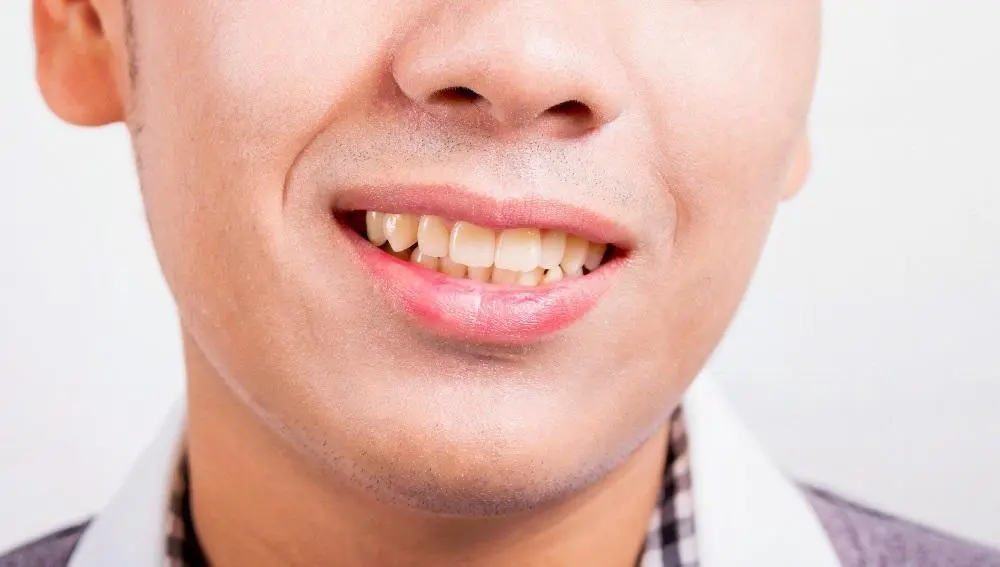Why Teeth Can Still Look Yellow Even with Regular Brushing
Many people brush their teeth twice a day but still notice a yellowish color. In fact, yellow teeth do not always mean poor oral hygiene. Tooth color is influenced by both external and internal factors that cannot be fixed by brushing alone.
Two Types of Tooth Stains: Extrinsic and Intrinsic
In dentistry, tooth discoloration is generally divided into two main types:
Extrinsic Stains (outer layer)
These occur on the outer surface of the tooth due to exposure to certain foods, drinks, or habits. They can usually be removed through professional cleaning (scaling) at a dental clinic.Intrinsic Stains (inner layer)
These occur within the dentin layer of the tooth. This type of discoloration cannot be removed with regular brushing and often requires aesthetic treatments such as bleaching or veneers as an effective way to whiten teeth.
Extrinsic Factors: Food, Drinks, and Daily Habits
Several daily habits can cause surface stains on teeth, such as:
Consuming dark-colored beverages like coffee, tea, wine, or soda
Eating foods with strong pigments such as curry, soy sauce, and berries
Smoking or vaping
Plaque and tartar buildup on the tooth surface
When plaque is not properly cleaned, it hardens into tartar. This allows pigments from food or nicotine to adhere easily, making the teeth appear yellow even if you brush regularly.
Intrinsic Factors: Genetics, Age, and Medical Conditions
Beyond external influences, yellow teeth can also be caused by internal factors, including:
Genetics: The natural color of dentin varies for each person; some naturally have more yellowish dentin.
Aging: Over time, the enamel thins, making the yellowish dentin layer more visible.
Certain Medications: Such as tetracycline antibiotics during the development of permanent teeth.
Dental Trauma or Previous Treatments: For instance, teeth that have undergone root canal treatment may gradually change color.
Discoloration caused by intrinsic factors cannot be resolved with brushing or scaling alone. Professional treatments like bleaching or veneers are required to restore the desired tooth color.
Is Brushing Enough to Treat Yellow Teeth?
Brushing remains essential for maintaining oral health. However, it is important to understand that brushing cleans the tooth surface but does not whiten the color.
If yellow teeth are caused by pigments within the dentin or tartar buildup, the results will not be visible even with consistent brushing.
The Role of Professional Cleaning (Scaling)
If you brush regularly but your teeth still look yellow, plaque and tartar buildup in hard-to-reach areas could be the reason.
Through professional scaling, a dentist can remove tartar using ultrasonic instruments that clean the tooth surface safely and effectively. As a result, your natural tooth color appears brighter and smoother.
In addition to improving aesthetics, scaling also helps prevent gum inflammation, bad breath, and tooth mobility in the future.
Professional Solutions: Safe and Effective Ways to Whiten Teeth
When tooth discoloration is caused by intrinsic factors, dentists may recommend safe and effective whitening options such as:
Bleaching (Whitening): Lightens the color of teeth using hydrogen peroxide under professional supervision.
Veneers: Thin layers of porcelain or resin that cover the front surface of the teeth to improve their color and shape.
Not every case of yellow teeth requires the same treatment. It is essential to consult your dentist so they can recommend the most suitable procedure based on your condition.
Conclusion
Yellow teeth are not always a sign of poor hygiene. The causes of yellow teeth can stem from internal factors such as genetics and aging, or external ones like dietary habits and tartar buildup.
Understanding the cause helps you find the most effective way to whiten your teeth, from regular scaling to professional aesthetic treatments such as bleaching or veneers.
With the right dental care, you can achieve a naturally brighter and healthier smile.
References
Understanding the Reasons for Tooth Discoloration in Children and Their Management: A Narrative Review. (2025). European Journal of Dental and Oral Health, 6(4), 41–46.
Kahler, B. (2022). Present status and future directions – Managing discoloured teeth.International Endodontic Journal, 55(Suppl 4), 922–950.

